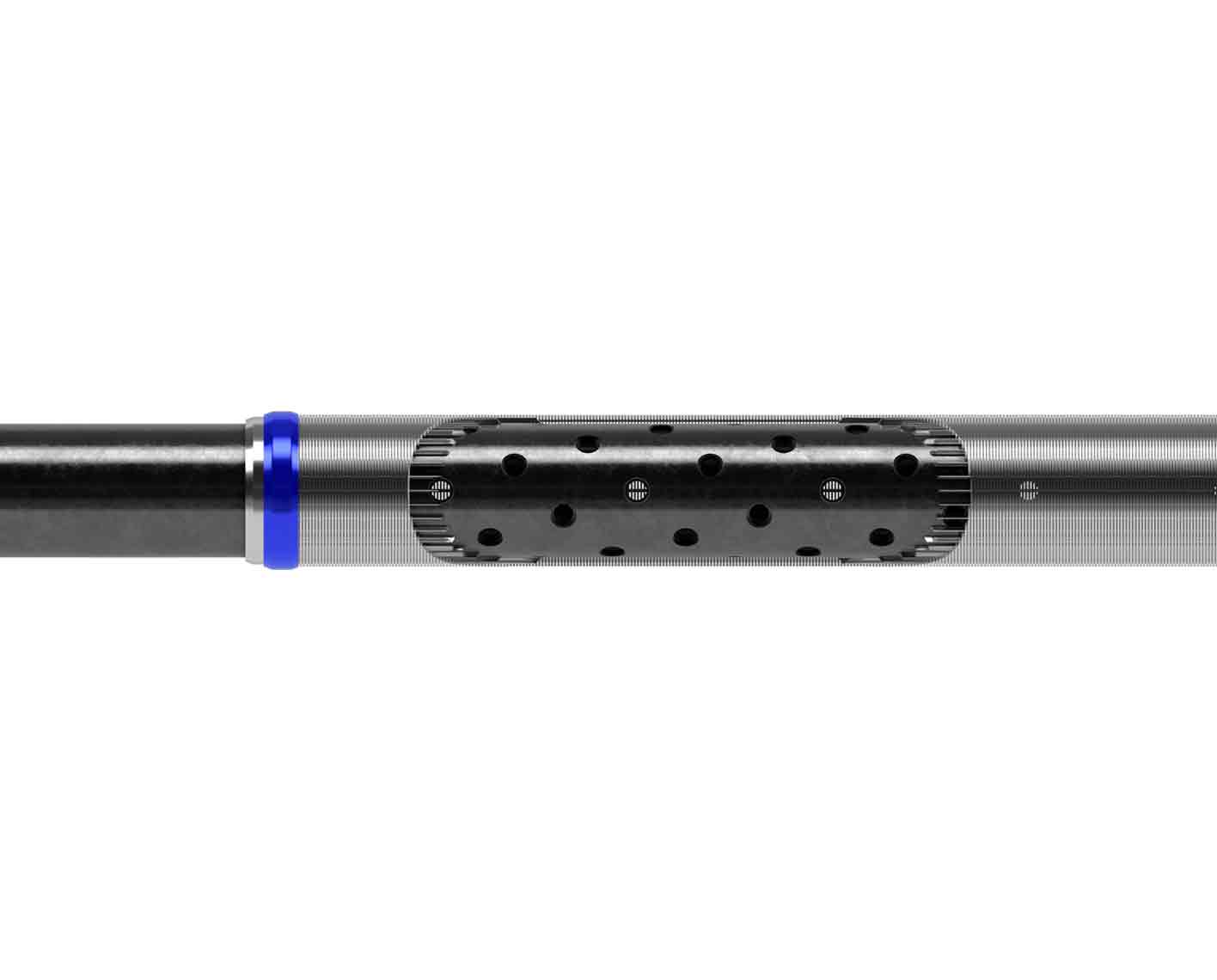Sand control screens
Precision filtration for every oil and gas well completion

From thru-tubing remediation to high-rate, erosion-prone producers, the SLB sand control portfolio incorporates proven screen technologies for every application. Whatever your well environment and completion design (gravel-packed or stand-alone screens), we have the right filter media—ceramic or alloy discs, mesh, wire wrap, or stainless steel wool—to ensure longevity and productivity. We use proprietary manufacturing techniques to produce the most robust, fit-for-purpose screens in strategically placed facilities worldwide.
The challenge
Sand control remains one of the most critical—and complex—elements of completion design. From fines migration and formation collapse to screen erosion and plugging, a multitude of events can compromise production rates, damage downhole and surface equipment, and trigger costly interventions.
Completion engineers must balance reservoir characteristics, flow regimes, deployment constraints, and filtration performance—often without full certainty on particle-size distribution or long-term drawdown conditions. No single screen design fits every scenario.
Our solution
We provide a comprehensive portfolio of engineered sand control screens—each developed for specific flow dynamics, filtration precision, and mechanical strength requirements. Whether your wells are gravel packed or completed with stand-alone screens, vertical or horizontal, high-rate or remedial, our technologies are designed to retain formation solids, minimize flow impairment, and extend well life. From stainless steel wool for unknown particle-size distributions to dual-filter ceramic discs for extreme velocities, a wide range of filter media ensure flow assurance, reliability, and operational fit.
Extended well life
High-strength, corrosion- and erosion-resistant materials withstand dynamic conditions, minimizing failures and extending screen life and sand-free production.
Fit-for-purpose design
Whether your goal is ultrahigh open flow area, erosion tolerance, or superior filtration for unconsolidated formations, each screen is purpose-built to match application requirements.
Proven performance, engineered repeatability
Computational fluid dynamics (CFD) modeling, lab-based erosion testing, and controlled manufacturing processes ensure repeatable, field-validated performance.
Solids retention, flow assurance
Optimized filtration media and pore geometries minimize plugging while preventing sand ingress, hence protecting ICDs, artificial lift equipment, tubing, chokes, and separators downstream.
Which sand control screen filter media is right for you?
Unknown or variable particle-size distribution?
- MeshRite™ stainless steel wool screens handle a wide range of sand and proppant particle sizes without premature plugging. They have become a key component of unconventional completions as part of the PumpGuard™ intake sand control screen and valve assembly for protecting artificial lift equipment from frac sand flowback.
- The Pumpguard assembly was part of an engineered solution that helped a Permian operator increase ESP run life by 400% and increase well uptime to 96%.
High-rate, high-velocity flow?
- CeramicSlot™ dual-filter ceramic sand screens have been erosion tested up to 285 ft/s.
- LineSlot™ high-flow-rate (HFR) direct-wire-wrapped screens feature a proprietary rib-wire geometry, validated through CFD, to reduce approach velocity and extend screen life in erosive, high-flow conditions.
Slimhole or thru-tubing remediation?
- RemedySlot™ erosion-resistant thru-tubing sand screens combine erosion-resistant disc filters and optional direct wire wrap for long-term reliability and performance.
Gravel-pack optimization?
- MeshSlot™ premium mesh screens and LineSlot™ direct-wire-wrapped screens feature customizable mesh and slot configurations to support flow efficiency and mechanical integrity
Completion design in flux?
- Let us help. Our broad screen portfolio enables optimal selection based on well architecture, cased or open hole, deployment limits, gravel-packing with or without shunts, and accommodation of accessories such as optical fiber, ICDs, and interval control valves.
